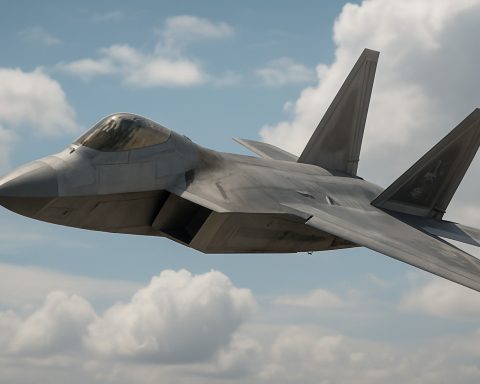- Hawaii’s night sky offers unparalleled stargazing opportunities due to its remote locations with minimal artificial light.
- Key stargazing spots on Oahu include the Ala Wai Canal, Tantalus Summit, China Walls, Diamond Head State Monument, Ka’ena Point State Park, and Mokule’ia Beach Park.
- The Hokulani Imaginarium provides indoor explorations of the night sky through immersive planetarium shows.
- Dillingham Airfield hosts stargazing events with the Hawaii Astronomical Society, fostering community engagement and learning.
- The Royal Hawaiian Center offers urban stargazing events that blend education with celestial observation.
- Hawaii’s landscapes and skies invite all to connect with the cosmos, providing a unique experience of natural and celestial beauty.
Imagine a canvas of shimmering stars overhead, a vast and endless sky above the tranquil beaches and volcanic landscapes of Hawaii. This island paradise, known for its lush greenery and sparkling oceans, transforms into a celestial theater by night, offering an unparalleled experience for stargazers.
Navigating the Night
To truly embrace Hawaii’s night sky, seekers of cosmic beauty should venture to less-trodden paths. Here, the bright glow of city lights fades, granting the stars center stage. Remote locales with minimal artificial illumination and clear, open skies set the scene for unforgettable viewing.
Hidden Gems and Popular Spots
On the island of Oahu, the Ala Wai Canal is a slice of tranquility amidst urban hustle, its unique placement yielding surprisingly clear views. Venturing to the Tantalus Summit, enthusiasts find themselves high above Honolulu, where the elevation clears the atmosphere for panoramic celestial displays.
Meanwhile, the rugged cliffs of China Walls offer a secluded haven for telescopic observations. The ocean stretching far into the distance complements the vast sky above, promising a stunning spectacle. Across the island, the famous volcanic landmark of Diamond Head State Monument invites explorers to its summit, where stars dance above an iconic crater.
Ka’ena Point State Park, positioned at Oahu’s remote western tip, offers a sky as vast and untamed as the landscapes around it. Under these primal expanses, constellations shir from the canvas of darkness. Equally captivating, Mokule’ia Beach Park on the North Shore provides low light pollution and an atmospheric backdrop of gentle waves.
The curious and the educated alike will find delight at the Hokulani Imaginarium, located at Windward Community College, where the universe can be explored indoors through immersive planetarium shows that simulate the night sky’s complexities.
Interactive Celestial Gatherings
For those seeking community under the stars, Dillingham Airfield organizes regular stargazing events with the Hawaii Astronomical Society, where both amateurs and seasoned astronomers gather to share telescopic views and insights into the wonders above. Similarly, the Royal Hawaiian Center transforms its rooftop into a platform for urban stargazing events that blend education with enchantment.
The Cosmos Awaits
Beyond the beaches and daily adventures, Hawaii offers a celestial wonderland filled with possibilities of discovery. Whether laying on sandy shores or seeking the summit of a volcanic peak, each spot presents a unique opportunity to connect with the cosmos.
Key Takeaway
Embrace the night away from the city lights, and let Hawaii’s skies reveal the universe’s grandeur. Whether you’re a casual observer or a dedicated astronomer, the landscapes and stars weave an experience that transcends earthly wonders, urging everyone to look up and discover what has mesmerized humankind for millennia.
Explore Hawaii’s Celestial Wonders: Top Stargazing Spots and Tips
Introduction
Imagine a canvas of shimmering stars overhead, a vast and endless sky above the tranquil beaches and volcanic landscapes of Hawaii. This island paradise, known for its lush greenery and sparkling oceans, transforms into a celestial theater by night, offering an unparalleled experience for stargazers.
Navigating the Night
To truly embrace Hawaii’s night sky, seekers of cosmic beauty should venture to less-trodden paths. Here, the bright glow of city lights fades, granting the stars center stage. Remote locales with minimal artificial illumination and clear, open skies set the scene for unforgettable viewing.
Additional Facts:
– Hawaii is home to the Mauna Kea Observatories, among the most important astronomical observatories in the world, positioned at an elevation of about 13,800 feet, which offers some of the best conditions for viewing the night sky due to its high altitude and stable air.
– The Hawaiian Islands are strategically located near the equator, providing a unique vantage point from which to observe both northern and southern celestial hemispheres.
Hidden Gems and Popular Spots
On the island of Oahu, the Ala Wai Canal is a slice of tranquility amidst urban hustle, its unique placement yielding surprisingly clear views. Venturing to the Tantalus Summit, enthusiasts find themselves high above Honolulu, where the elevation clears the atmosphere for panoramic celestial displays.
The rugged cliffs of China Walls offer a secluded haven for telescopic observations. The ocean stretching far into the distance complements the vast sky above, promising a stunning spectacle. Across the island, the famous volcanic landmark of Diamond Head State Monument invites explorers to its summit, where stars dance above an iconic crater.
Ka’ena Point State Park, positioned at Oahu’s remote western tip, offers a sky as vast and untamed as the landscapes around it. Under these primal expanses, constellations shift from the canvas of darkness. Equally captivating, Mokule’ia Beach Park on the North Shore provides low light pollution and an atmospheric backdrop of gentle waves.
The curious and the educated alike will find delight at the Hokulani Imaginarium, located at Windward Community College, where the universe can be explored indoors through immersive planetarium shows that simulate the night sky’s complexities.
Additional Facts:
– Mauna Kea on the Big Island is rated as one of the premier stargazing locations due to its height and clear skies. Visitors can participate in public star tours.
– Haleakalā National Park on Maui offers breathtaking sunrise and sunset views on top of stargazing, with ranger-led programs available at certain times.
Interactive Celestial Gatherings
For those seeking community under the stars, Dillingham Airfield organizes regular stargazing events with the Hawaii Astronomical Society, where both amateurs and seasoned astronomers gather to share telescopic views and insights into the wonders above. Similarly, the Royal Hawaiian Center transforms its rooftop into a platform for urban stargazing events that blend education with enchantment.
Life Hacks:
– Bring a red flashlight to navigate the dark without affecting night vision.
– Use smartphone apps like Star Walk or SkyView to help identify stars and constellations.
Market Forecasts & Industry Trends
As interest in astronomy and astrotourism grows, Hawaii’s potential for stargazing tourism continues to expand. The demand for dark sky reserves and observatories is increasing globally, with Hawaii positioned to be a leader due to its unique geographical location and conditions.
Security & Sustainability:
– Hawaii is committed to preserving its dark skies through legislation that controls light pollution, ensuring continued quality stargazing experiences for future generations.
Actionable Recommendations
– Visit remote locations for best visibility—avoid nights with a full moon for optimal dark sky conditions.
– Check weather forecasts to ensure clear skies, especially during Hawaii’s relatively dry season from April to October.
Related Links:
– Explore more about Hawaii’s natural wonders and attractions at the official Hawaii Tourism Authority: GoHawaii
Embrace the night away from the city lights, and let Hawaii’s skies reveal the universe’s grandeur. Whether you’re a casual observer or a dedicated astronomer, the landscapes and stars weave an experience that transcends earthly wonders, urging everyone to look up and discover what has mesmerized humankind for millennia.











